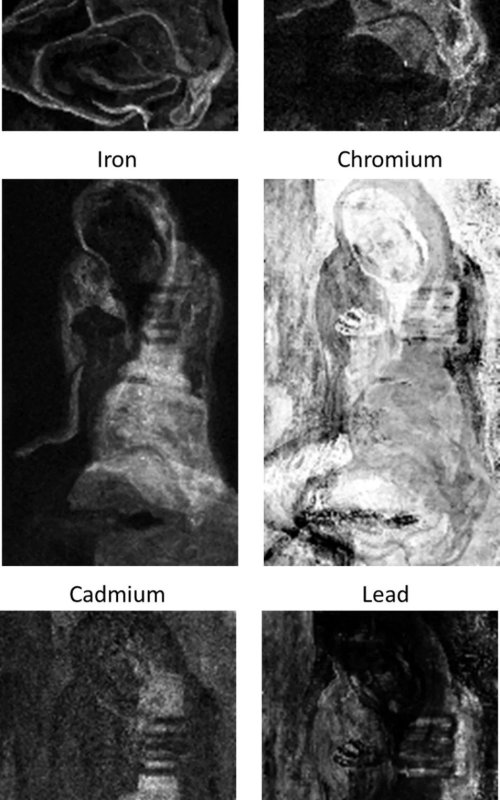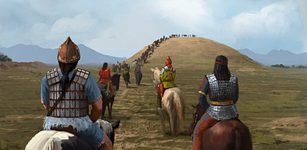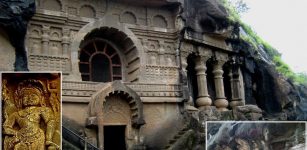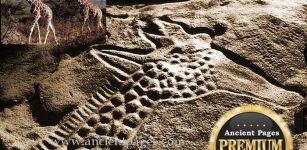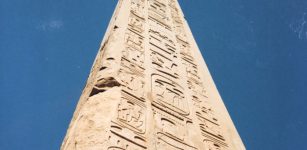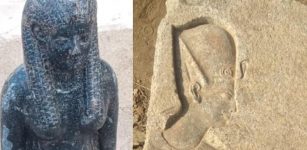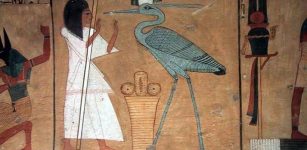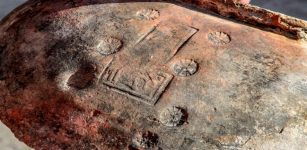Hidden Details Discovered In Picasso’s Painting The Crouching Woman
AncientPages.com - Many famous artists had hidden secrets messages or other details beneath their paintings. One of them was world famous painter and sculptor Pablo Picasso (1881-1973) who deliberately changed certain things during the painting process.
Using an X-ray fluorescence imaging instrument researchers have discovered there is hidden information in Picassos’ painting “La Miséreuse accroupie”, (The Crouching Woman), a major work from the artist’s Blue Period.
The 1902 oil painting, owned by the AGO in Toronto, Canada, depicts a crouching and cloaked woman, painted in white, blues, grays and greens.
Pablo Picasso. La Miséreuse accroupie, 1902. Oil on canvas, 101.3 x 66 cm (39 7/8 x 26 in.). Art Gallery of Ontario. Anonymous gift, 1963. © Picasso Estate.
With knowledge of an underlying landscape revealed long ago by X-ray radiography at the AGO, researchers used non-invasive portable imaging techniques, including infrared reflectance hyperspectral imaging adapted by the National Gallery of Art and then an X-ray fluorescence imaging instrument developed at Northwestern University, to detail buried images connected to other works by Picasso -- including a watercolor recently sold at auction, as well as the presence of a landscape likely by another Barcelona painter underneath “La Miséreuse accroupie.”
“Picasso had no qualms about changing things during the painting process. Our international team consisting of scientists, a curator and a conservator has begun to tease apart the complexity of ‘La Miséreuse accroupie,’ uncovering subtle changes made by Picasso as he worked toward his final vision,” Marc Walton, a research professor of materials science and engineering at Northwestern’s McCormick School of Engineering and co-director of NU-ACCESS said.
Distribution maps of a few elements characteristic of the pigments present in the different paint layers of La Miséreuse accroupie. Credit: PA
The results of the study revealed that Picasso painted over another painter’s work after rotating it 90 degrees to the right, using some of the landscape forms in his own final composition of “La Miséreuse accroupie.” Picasso incorporated the lines of the cliff edges into the woman’s back, for example.
Picasso also made a major compositional change, the researchers report. The artist initially painted the woman with a right arm and hand holding a disk but then covered them with her cloak in the final work.
The woman's back was once a Catalonian landscape Credit: PA:
According to senior conservator of paintings Sandra Webster-Cook, distinct textures and contrasting underlying color that peaked through the crack lines and did not match the visible composition. X-ray radiography was the first non-invasive tool used to uncover hidden information in “La Miséreuse accroupie”; it revealed a horizontal landscape by a different Barcelona painter, whose identity remains unknown, under the visible surface of Picasso’s painting.
See also:
10 Mysterious Ancient Manuscripts With Hidden Secrets
X-Ray Reveal Ghostly Portrait Of Mary Queen Of Scots Hidden Underneath 16th Century Painting
This Ancient Roman Painting Survived Eruption Of Mount Vesuvius In 79 A.D.
John Delaney, senior imaging scientist at the National Gallery of Art observed that Picasso’s painting records underlying images depending on their relative transparency of the paint layers. He found an arm and a disk under the surface of the painting.
It became clear that the arm hidden under the visible surface of ‘La Miséreuse accroupie’ is the same as the proper right arm of a crouching woman in a Picasso watercolor recently sold at auction.
“We now are able to develop a chronology within the painting structure to tell a story about the artist’s developing style and possible influences,” Sandra Webster-Cook said.
The study was conducted by scientists from the Northwestern University/Art Institute of Chicago Center for Scientific Studies in the Arts (NU-ACCESS), the Art Gallery of Ontario (AGO) and the National Gallery of Art, Washington.
AncientPages.com
Expand for references

